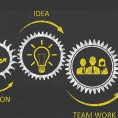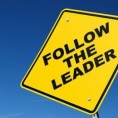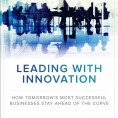Nobody enjoys failure. Yet failing at a task is how we learn. Great organizations and ideas aren’t born wholly realized: They’re formed through practice, patience, and persistence. Many entrepreneurs and even the world’s most renowned international speakers will tell you that they had numerous failures before they had any success. Want to get ahead? Start failing your way upwards today. Here’s how to win, even when you lose.
Innovation happens through strategic and measured failure. Being proactive pays: Put programs and platforms in place that allow for constant, ongoing experimentation that lets you address potential problems or course corrections long before they ever become concerns. They key is to plan several steps ahead. The worst time to find yourself sprinting for solutions is while the house burns down around you—putting out fires is easier when you’ve already got an extinguisher on-hand.
Prototype, iterate, and refine. When product manufactures ship the first run of their wares, they listen carefully to customer feedback. It’s through this interaction that they learn whether or not their marketing and communication strategy is working. They also learn what users want from the product, and grow organically. Some companies—Google and Microsoft, for example—form in-house incubators that dedicate themselves exclusively to creating new products, new technology, and solving problems. Not all those ideas work, obviously, but if done smartly and cost-effectively, the expense pales before the triumph of eventual successes.
It pays to approach life and business like a computer programmer. No program is created bug-free: over time, programmers comb through their work, test it in small batches, and address problems as they pop up. If we treat our businesses, careers and personal challenges the same way, we can find the pieces that work, and mend the parts and ideas that aren’t as well-realized. Then, in version 2.0, we can go straight from failure to success.
Learning from failure may seem expensive, but ignorance is even costlier. Knowledge gained through failure is directly applicable to future ventures. So try, fail, and try again until you get it right. Just remember: Only a fool makes the same mistake twice.
Looking for an international speaker on strategic innovation or futurist global trends expert to provide further insight into creating a culture that prizes strategy planning and forward-thinking insights? Don’t hesitate to contact us today.














